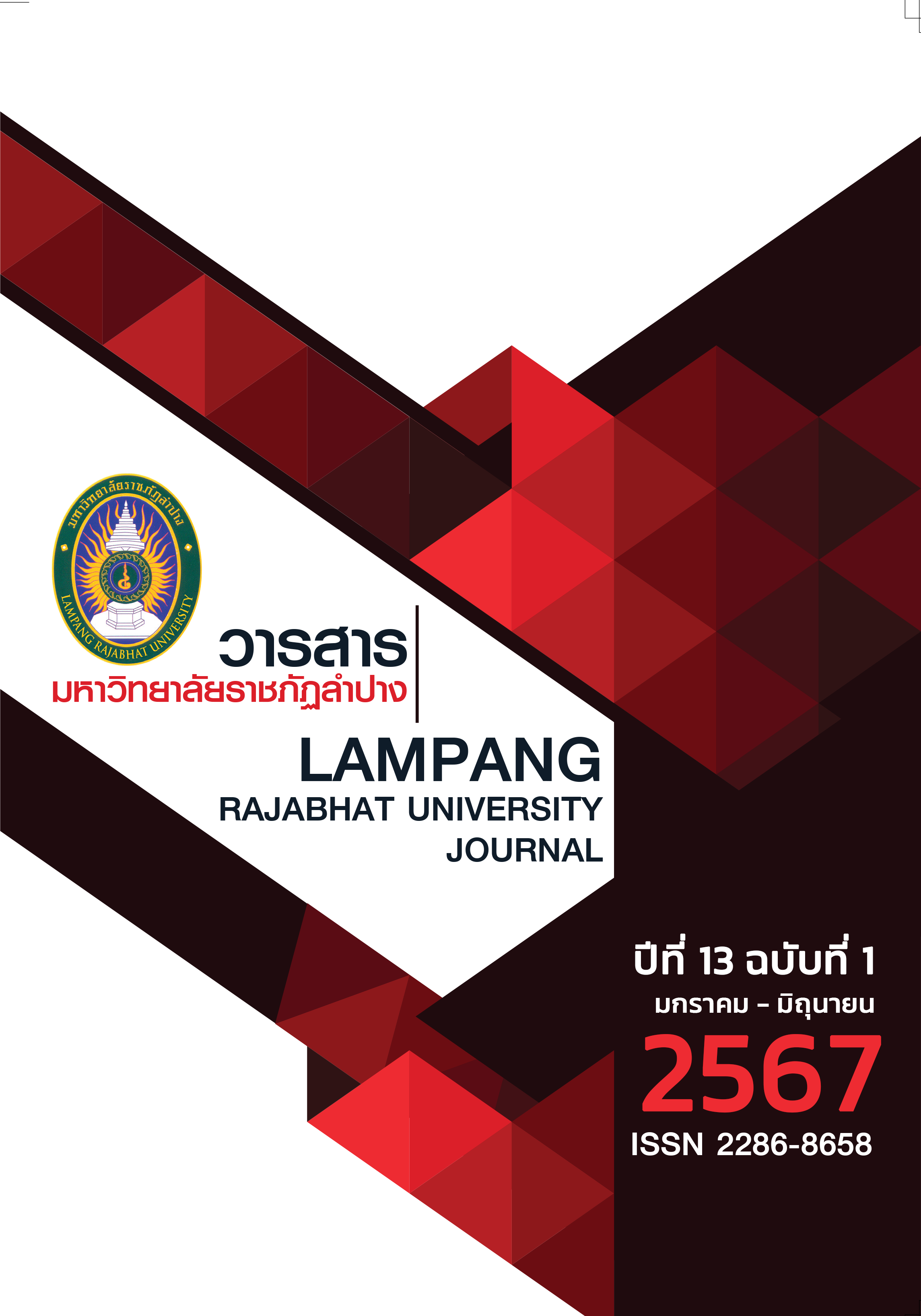Causal Factors Influencing the Success Using Social Commerce of Indigo Dyed Business in Sakon Nakhon
Keywords:
success factors, social commerce, indigo dyed, Unified Theory of Acceptance and Use of Technology ModelAbstract
This research aims to analyze the confirming and causative factors influencing the success of using social commerce in the traditional indigo dyed business in Sakon Nakhon province. And to study the direct and indirect influences of causal factors that impact the success of using social commerce in the traditional indigo dyed fabric business in Sakon Nakhon province, utilizing the Unified Theory of Acceptance and Use of Technology model through confirmatory factor analysis Collect data through questionnaires by selecting a sample group from the entrepreneurs of the indigo dyed fabric business in Sakon Nakhon province. Used the method of quota sampling according to the district proportions of Sakon Nakhon province, consisting of 18 districts, resulting in a total sample group of 640 individuals.
The results of the confirmatory factor analysis indicate that the confirmatory factors are well-fitted to the observed data. Considering the statistical values used to verify the model's consistency, the values are χ2=1178.361, df=246, χ2/df=4.79, P-value=.175, CFI=.971, TLI=.959, RMSEA=.030, SRMR =.041. And the results of the analysis of direct and indirect effects reveal that expectation factors towards efficacy have a direct influence on the intention to use behavior. Expectancy in usage effort has a direct impact on the intention to use behavior and exerts an indirect influence on usage behavior. Social embeddedness factors have a direct influence on the intention to use behavior and exert an indirect influence on usage behavior. Convenience factors have a direct impact on usage behavior.
References
กัลยา วานิชย์บัญชา. (2552). สถิติสำหรับงานวิจัย. (พิมพ์ครั้งที่ 4). ศูนย์หนังสือแห่งจุฬาลงกรณ์มหาวิทยาลัย. กรุงเทพมหานคร.
จิรภัทร เริ่มศรี และจันทิมา เขียวแก้ว. (2562). กลยุทธ์การสื่อสารอัตลักษณ์ผ้าย้อมคราม สกลนคร.วารสาร มจร สังคมศาสตร์ปริทรรศน์, 8(4), 178-190. https://so03.tci-thaijo.org/index.php/jssr/article/view/224731.
ชาติชัย อุดมกิจมงคล, พิสดาร แสนชาติ, สัญญาศรณ์ สวัสดิ์ไธสง และสามารถ อัยกร. (2565). การบูรณาการของห่วงโซ่คุณค่าครามสกลนคร. วารสารวิทยาลัยนครราชสีมา, 16(2), 84-100. https://so03.tci-thaijo.org/index.php/hsjournalnmc/article/view/260706.
พณีพรรณ สมบัติ. (2565). ปัจจัยที่มีอิทธิพลต่อความตั้งใจในการใช้งานนวัตกรรมบริการแอปพลิเคชัน “หมอพร้อม” ในเขตกรุงเทพมหานคร. วารสารการบัญชีและการจัดการ มหาวิทยาลัยมหาสารคาม, 4(1), 142-160. https://so02.tci-thaijo.org/index.php/mbs/issue/download/16851/4344.
สำนักงานพัฒนาธุรกรรมทางอิเล็กทรอนิกส์ กระทรวงดิจิทัล. (2564). รายงานผลการสำรวจมูลค่าพาณิชย์อิเล็กทรอนิกส์ในประเทศไทย ปี 2564. https://www.etda.or.th/th/Useful- Resource/publications/ValueThailand2021.aspx.
สำนักงานพัฒนาชุมชนจังหวัดสกลนคร. (2565). ผ้าย้อมครามสกลนคร. https://online.pubhtml5.com/eree/fmyd/#p=1.
สำนักงานส่งเสริมภูมิปัญญาท้องถิ่นและวิสาหกิจชุมชน กรมการพัฒนาชุมชน กระทรวงมหาดไทย. (2563). ฐานข้อมูล หนึ่งตำบล หนึ่งผลิตภัณฑ์.https://cep.cdd.go.th/เกี่ยวกับ-otop/ข้อมูลทั่วไปotop.
สุนทรพจน์ ดำรงค์พาณิชย์. (2563). โปรแกรม Mplus กับการวิเคราะห์ข้อมูลทางพฤติกรรมศาสตร์และสังคมศาสตร์. พิมพ์ครั้งที่ 2. สำนักพิมพ์จุฬาลงกรณ์มหาวิทยาลัย. กรุงเทพมหานคร.
Alaa, M. Momani. (2022). A Modified Technology Acceptance Theory to Assess Social Commerce Technology Adoption. Information Resources Management Journal, 34(2), 43-62. https://research.skylineuniversity.ac.ae/id/eprint/68/1/6.pdf
Hair, J. F., Black, W. C., Babin, B. J., Anderson, R. E. & Tatham, R. L. (2006). Multivariate Data Analysis. (6th ed.). New Jersey: Pearson Education International.
Lindeman, R. H., Merenda, P. F. & Gold, R. Z. (1980). Introduction to bivariateand multivariate analysis. Glenview, IL: Scott, Foresman, and Company.
OZLEM EFILOGLU KURT and Tuğrul aktas. (2023). Factors Affecting Social Commerce Intention: An Emprical study on Social Media Platforms. Prizren Social Science Journal, 7(2), 62-74.https://www.prizrenjournal.com/index.php/PSSJ/article/view/444/197.
Pushp, P., Kuttimani, T., Nripendra, P. R. & Vishnupriya, R. (2020). Understanding consumer adoption of mobile payment in India: Extending Meta-UTAUT model with personal innovativeness, anxiety, trust, and grievance redressal. International Journal of Information Management. 54(2020), 1-16. https://doi.org/10.1016/j.ijinfomgt.2020.102144.
Venkatesh, V., Morris, M. G., Davis, G. B. & Davis, F. D. (2003). User acceptance of information technology: Toward a unified view. MIS quarterly, 27(3), 425–478. https://doi.org/10.2307/30036540.
Downloads
Published
How to Cite
Issue
Section
License
Copyright (c) 2024 Lampang Rajabhat University Journal

This work is licensed under a Creative Commons Attribution-NonCommercial-NoDerivatives 4.0 International License.
บทความลิขสิทธิ์ของวารสารมหาวิทยาลัยราชภัฎลำปาง






